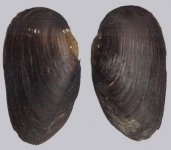The Irish Pearl.

From the website:
Pearl fishing has an exotic ring to it, but few people know that it was once a widespread activity in Ireland. In fact, pearls have been found in rivers throughout the country, and they have been a feature of our past since the ancient Irish began to trade them with the Phoenicians in exchange for the secrets of producing purple dye, and the Tuatha D? Danann used them as elixirs.
Throughout the centuries, pearl fishing in Ireland has ranged between a casual occupation and an organized commercial concern. The fisheries that were established on most major rivers never reached national importance, since only one in ten thousand freshwater mussels contains a valuable jewel. Nevertheless, the pearl has been used in Ireland for personal and religious adornment, and has made an impression on Irish folklore, legend and art. It even appears in some Irish stories to signify the patriotic homeland, which produces such a pure and precious gem.
Like any commodity of such arbitrary value, the price of pearls has varied greatly depending on when, where and to whom they were sold. It is the poor who have fished Ireland’s rivers for pearls, though, and this book describes the part that pearls have had to play in the social conditions of those who fished for them.
The Irish pearl, traces the place of the Irish pearl in the myth, history, commerce, science, arts and literature of Ireland. It draws on gemmology, biology and economics as well as on historical and literary resources to shed light on a hitherto neglected aspect of our history and culture.
John Lucey is a biologist and historian. He is currently employed by the Environmental Protection Agency as Senior Scientific Officer. A Chartered Biologist (CBiol) and Member of the Institute of Biology (MIBiol), he holds master’s degrees in Science (MSc) and Economic and Social History (MPhil). His main areas of professional speciality are in the realms of water quality and biodiversity. As well as publishing scientific papers he has written articles on aspects of social history. It was when researching the biology and distribution of the freshwater mussel, Margaritifera margaritifera, that he became interested in the history of the pearl it produces.


